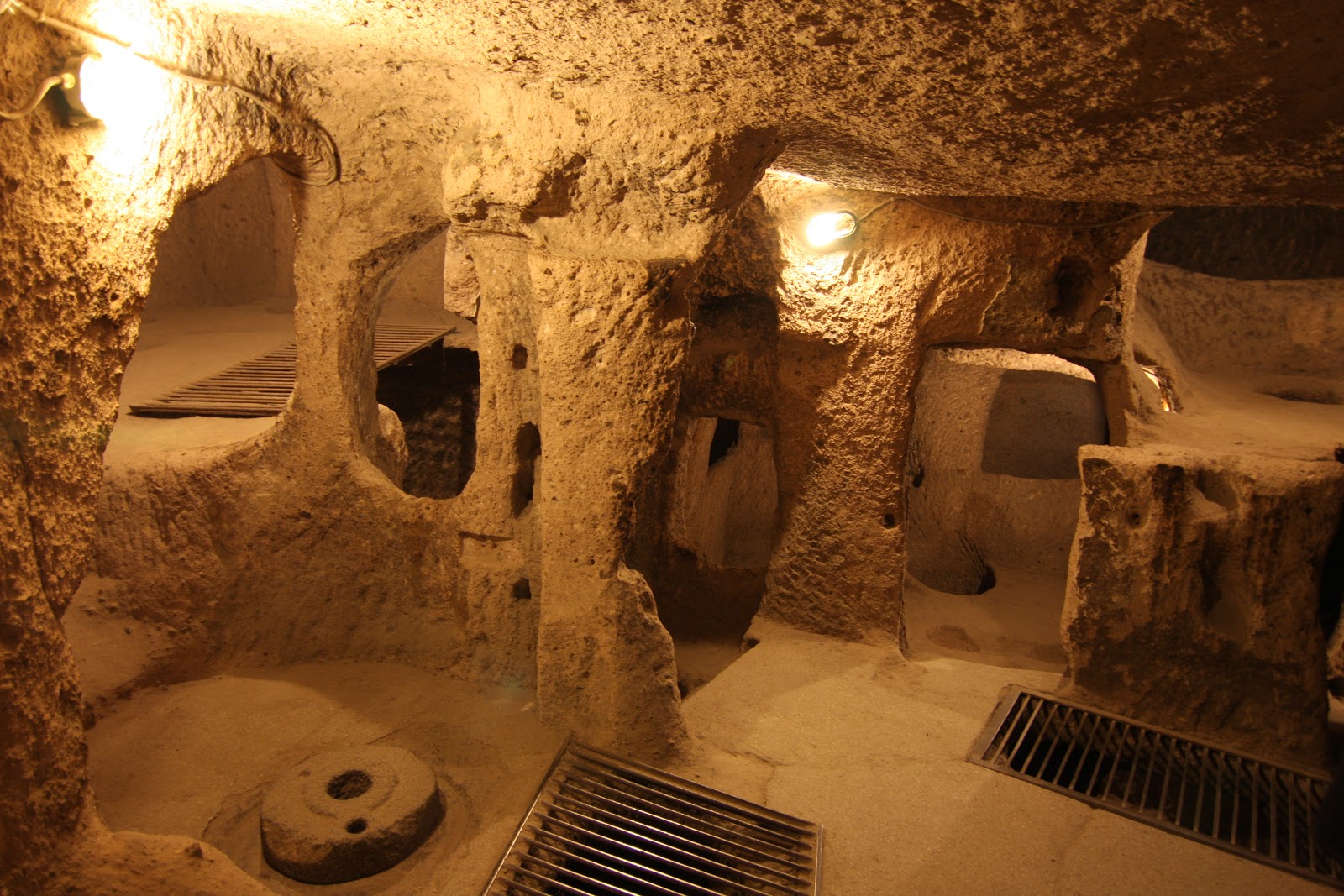
01 Apr An inside look: Derinkuyu, underground city
For some reasons, the inhabitants of Cappadocia decided to build their cities down the earth. There are not exact dates of the creation of these underground citadels. Some believe that they came from the Hittites and certainly, Xenophon, the Greek historian, refers to them in his “Anabasis”, five centuries before the birth of Christ. Over time, they have been discovering many of these settlements, and in fact, it is believed that in most cases they are interconnected, but for now those are just assumptions.
In one of these cities, Derinkuyu, buried up to 85 feet deep, -as far as I have understood, the biggest of all-, I ended up almost inadvertently, accompanying a group of tourist friends. The Cappadocia region never ceases to amaze me. You think you’ve seen it all, the valley, the churches, the fairy chimneys, the amazing landscape, and soon you find a whole underground city, with rooms, bathrooms, kitchens, dining rooms, warehouses, stores, chapels, graves and really great air vent system.
Logic tells us that the inhabitants of the region created these cities to be protected against severe weather and enemy attacks. From the surface no one could imagine there was so many people down there. No doubts about it, it was an excellent hiding place. “The houses were built underground, and the entrances were like wells that widened below. They had tunnels dug for the animals, while people descend by stairs. Among the houses were goats, sheep, cattle and poultry, together with their young … “wrote Xenophon.
Derinkuyu, meaning “Deep Well” features eight levels, connected by stairs and 53 air ducts. The original vent system still works perfectly and it is estimated that the city could accommodate about 20 thousand people.
As a particular case, Derinkuyu, in his first two floors beneath the surface hosted a missionary school, with two long tables made of rock, baptismal font, kitchens, homes, warehouses and even stables. In the third and fourth floors remained the hideouts and the armory and in the deeper floors there were wells, hidden corridors, a small church, tombs and a confessional. As a measure of maximum security, from the inside of the city they could blocked all the multiple entries with large stones, independently on each level.
Due to its complexity and to adapt to changing conditions, the underground cities were perfected and extended over time. Appears that while there was no danger people were living on the surface, but before any abnormal situation they went down to their perfect retreat; thus, most of the houses above were connected also to the underground city.
In fact, thanks to these connections, the city was found and rescued in 1963, when a resident of the area, bringing down one of the walls of his house, excavated in the rock as is customary in the region, discovered a mysterious unknown room, which led to another and then to another … he had rediscovered Derinkuyu, the largest of the underground cities of Cappadocia.
Although for me it was amazing, I would not recommend this tour to claustrophobics. Such labyrinthine shelters were built precisely for closure, for the fact of being buried away from danger and enemy invasions. There took over, for example, the early Christians persecuted by the Romans, and lived there for some time, so they were gradually accommodating site conditions to their needs.
Traveling through different levels of Derinkuyu, I could not think of anything else than hundreds of Cappadocian digging their tunnels, just with a ray of light, working to exhaustion to create a safer life underground.



